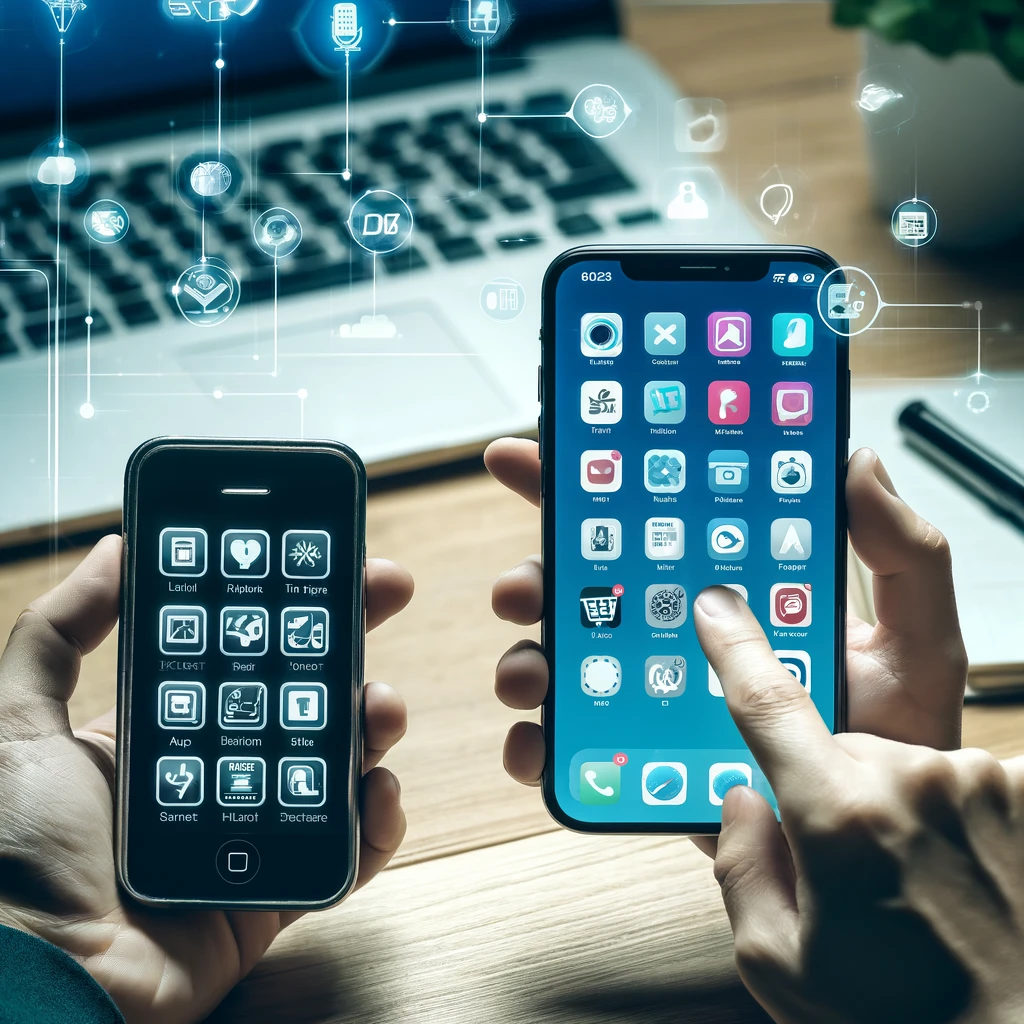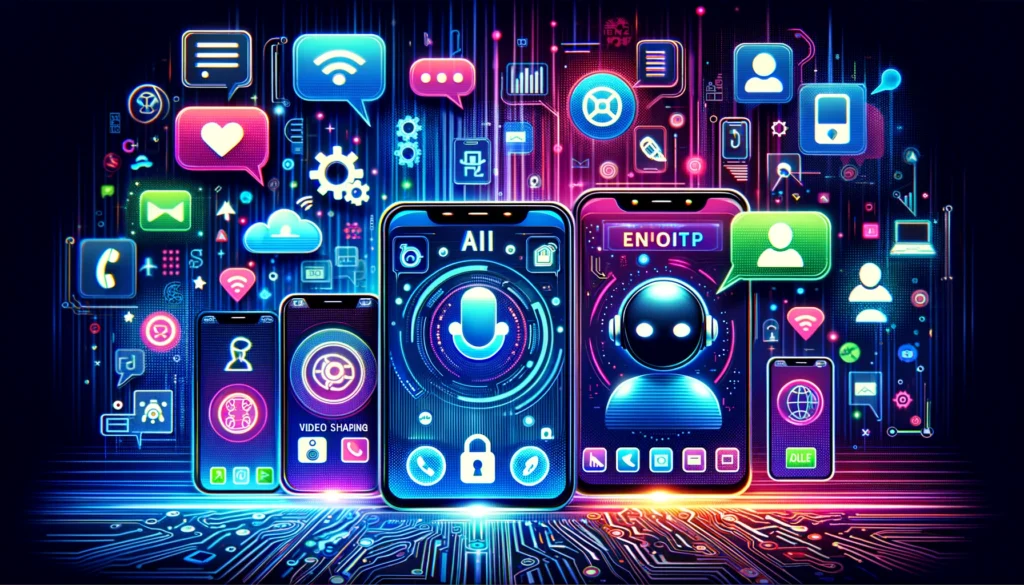The world of applications, or apps, has undergone a remarkable transformation over the past few decades. From their humble beginnings as simple programs to their current state as sophisticated tools that integrate seamlessly into every aspect of our lives, apps have evolved in ways that have fundamentally changed how we interact with technology. In this article, we will explore the journey of applications from their inception to the present day, and we’ll take a look at what the future holds for this ever-evolving field.
The Early Days of Applications
The Birth of Software Applications
The concept of software applications dates back to the early days of computing. In the 1950s and 1960s, computers were massive machines that filled entire rooms and were primarily used for scientific and military purposes. Early applications were custom-built programs designed to perform specific tasks, such as calculations and data processing. These programs were written in machine language or assembly language, which were the only programming languages available at the time.
The Personal Computer Revolution
The 1970s and 1980s saw the advent of personal computers (PCs), which brought computing power to the masses. This era marked the beginning of the software industry as we know it today. Companies like Microsoft and Apple emerged, developing operating systems and application software for the growing number of PC users. Word processors, spreadsheets, and simple games became popular applications, and programming languages like BASIC, C, and Pascal made software development more accessible.
The Rise of Graphical User Interfaces
One of the most significant advancements in application development was the introduction of graphical user interfaces (GUIs). Prior to GUIs, users interacted with computers through text-based command lines. The introduction of GUIs in the 1980s, popularized by Apple’s Macintosh and later by Microsoft Windows, revolutionized the way people used computers. Applications became more user-friendly, and the mouse and keyboard became standard input devices. This shift allowed a broader audience to use and benefit from software applications.

The Internet Era
The Emergence of Web Applications
The 1990s brought the rise of the internet, which transformed the landscape of applications once again. The World Wide Web made it possible to access applications over the internet, leading to the development of web applications. These applications were hosted on remote servers and accessed through web browsers. This new paradigm eliminated the need for users to install software on their local machines, paving the way for the software-as-a-service (SaaS) model.
The Dot-Com Boom
The late 1990s saw the dot-com boom, a period of rapid growth and investment in internet-based companies. Many new web applications were developed during this time, including early versions of e-commerce platforms, search engines, and social networking sites. Although the dot-com bubble eventually burst, it laid the foundation for the internet’s role in modern application development.
The Mobile Revolution
In the early 2000s, the introduction of smartphones and mobile devices marked another significant milestone in the evolution of applications. The release of Apple’s iPhone in 2007 and the subsequent launch of the App Store in 2008 revolutionized the way people accessed and used applications. Mobile apps became a ubiquitous part of daily life, offering everything from communication tools and social media platforms to games and productivity apps.
The Modern Era of Applications
Cloud Computing and SaaS
Cloud computing has had a profound impact on the development and deployment of applications. Cloud-based services allow developers to build, host, and scale applications without the need for extensive on-premises infrastructure. This has led to the widespread adoption of SaaS, where users subscribe to software services hosted in the cloud. Companies like Google, Microsoft, and Amazon offer a range of cloud services that support the development and operation of modern applications.
Artificial Intelligence and Machine Learning
Artificial intelligence (AI) and machine learning (ML) have become integral components of modern applications. AI-powered features, such as natural language processing, image recognition, and predictive analytics, enhance the functionality and user experience of applications. For example, virtual assistants like Siri, Alexa, and Google Assistant use AI to provide personalized assistance, while recommendation engines on platforms like Netflix and Amazon enhance user engagement.
The Internet of Things (IoT)
The Internet of Things (IoT) is another significant trend shaping the future of applications. IoT refers to the network of interconnected devices that communicate and exchange data. Applications that leverage IoT technology enable users to control and monitor various aspects of their environment, such as smart home devices, wearable health monitors, and industrial automation systems. The integration of IoT with applications opens up new possibilities for automation and efficiency.
Augmented Reality (AR) and Virtual Reality (VR)
Augmented reality (AR) and virtual reality (VR) are transforming the way we interact with applications. AR overlays digital information onto the real world, enhancing the user’s perception of their surroundings. VR, on the other hand, creates immersive digital environments. Applications that incorporate AR and VR technology are being used in fields such as gaming, education, healthcare, and retail. For example, AR apps like Pokémon GO and IKEA Place allow users to interact with digital content in the real world, while VR applications like Oculus Rift provide immersive gaming and training experiences.
The Future of Applications
Edge Computing
Edge computing is an emerging paradigm that aims to process data closer to the source of generation, rather than relying on centralized cloud servers. This approach reduces latency and improves the performance of applications that require real-time processing. Edge computing is particularly relevant for IoT applications, where data is generated by distributed devices. By processing data at the edge, applications can deliver faster and more efficient services.
Blockchain Technology
Blockchain technology, known for its role in cryptocurrencies, has the potential to revolutionize applications across various industries. Blockchain provides a decentralized and secure way to record transactions and manage data. Applications that leverage blockchain technology can offer enhanced security, transparency, and trust. For example, blockchain-based applications are being developed for supply chain management, digital identity verification, and decentralized finance (DeFi).
5G Connectivity
The rollout of 5G networks promises to bring significant improvements in connectivity, speed, and latency. 5G technology will enable applications to deliver richer and more interactive experiences. For example, 5G will support the widespread adoption of IoT devices, enable real-time gaming and streaming, and facilitate advanced applications in fields such as telemedicine and autonomous vehicles.
Ethical and Responsible AI
As AI continues to play a central role in application development, there is a growing emphasis on ethical and responsible AI practices. Developers are increasingly focusing on ensuring that AI algorithms are transparent, fair, and unbiased. Applications that incorporate ethical AI principles will build trust with users and promote the responsible use of technology.
Cross-Platform Development
The future of application development is likely to see a rise in cross-platform development frameworks. These frameworks allow developers to build applications that can run on multiple operating systems and devices with minimal code changes. Tools like Flutter, React Native, and Xamarin are gaining popularity for their ability to streamline the development process and reduce time-to-market.
Personalized Experiences
Personalization will continue to be a key trend in application development. As users expect more tailored experiences, applications will leverage data analytics, AI, and ML to provide personalized content, recommendations, and interactions. For example, streaming services like Netflix use personalized algorithms to suggest shows and movies based on user preferences, while e-commerce platforms like Amazon offer personalized shopping experiences.

Conclusion
The evolution of applications has been a journey of continuous innovation and transformation. From the early days of custom-built programs to the modern era of AI-powered, cloud-based, and IoT-integrated applications, the landscape of software development has changed dramatically. As we look to the future, emerging technologies such as edge computing, blockchain, 5G, and ethical AI will continue to shape the way we develop and use applications.
The rapid pace of technological advancements promises to bring even more exciting developments in the world of applications. As developers and users, we must embrace these changes and explore the possibilities they offer. By staying informed and adaptable, we can harness the power of applications to improve productivity, enhance user experiences, and address complex challenges in our ever-evolving digital world.
In conclusion, the journey of applications is far from over. The constant evolution and integration of new technologies will continue to push the boundaries of what is possible. Whether you’re a developer creating the next groundbreaking app or a user looking to enhance your daily life, the future of applications holds endless opportunities for innovation and growth.


